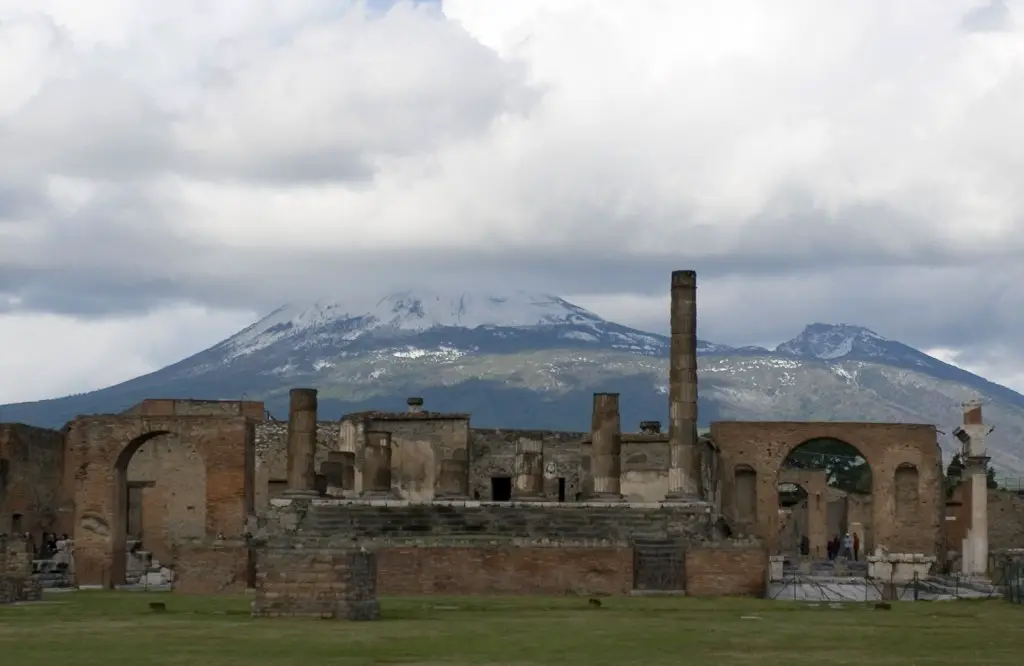 Brief Introduction:
Brief Introduction:
Pompeii is an ancient Roman city, found in the seventh or sixth century BC by the Osci or Oscans later acquired by Rome in 80 BC. This town was spread across160 acres of land in present day Italy. This urbanized city was well ensconced amidst Mount Vesuvius, River Samo and the Bay of Naples. It was a centre of commercial prosperity gaining from wine trade and agriculture owing to its fertile soil.
Fact 1:
With the turn of 1st century AD, infrastructural developments grew manifolds within the city. The pleasant scene and climate charmed the rich Roman to populate the city with holiday resorts. Following this, elegant houses like the Surgeon’s House, Faun, the Chaste Lovers and the house of mysteries, intricate villas and shops sprouted dotting either side of the streets. Fountains and pools were randomly dispersed decorating the city. There was also a separate walkway on a higher platform to allow the vehicles in motion.
Presence of amphitheatres, public buildings and baths, basilicas and gymnasiums dominated Pompeii encouraging tourism. An aqueduct system facilitated the distribution of water into the city from the neighboring river.
Fact 2:
Marking the 24th of August 79 AD, Vesuvius exploded, engulfing an abruptly stalled Pompeii with one of the deadliest eruptions of history. Mount Vesuvius is a 2000 year old active volcano, holding a record of more than 40 episodes of eruption prior to the washout.
Fact 3:
The turn of incidents at Pompeii were witnessed and voiced out by an ancient Roman writer ‘Pliny, the younger’ in the letters to his friend. He was in his early teens when he describes the eruption to be a cloud of unusual size and appearance. He compares it to a pine tree, when it rose to a great height, as if on a trunk and then split off into branches. Following this the geologists of today call this type of volcanic activity a “Plinean eruption.”
Fact 4:
The first eruption spewed out chunks of debris covering a height of 12 miles (twice the height of Mount Everest) of the atmosphere, burying the city under a thick carpet of 16 feet deep molten ash leaving only taller buildings to visibility.
Fact 5:
A sequence of another eruption followed lasting for a day, conquering 2000 square miles of land. A searing combination of pumice and ash descended the mountain at 70 miles an hour destroying the entirety on its course.
Fact 6:
The poured rains of fine ash encased the bodies; the decayed soft tissues leached and the victims’ bodies hardened to a porous shell ‘capturing their final postures’ at the moment of death.
Fact 7:
The rediscovery of the abandoned site in 1748 paved the way to excavate the city of Pompeii from its volcanic debris as it had been exactly 2,000 years before on 24th August 79 AD. The emotions of fear of the victims in their final moments were displayed by their surviving postures. The buildings, arts and arti crafts, everyday objects and household goods were undefiled. Archaeologists even uncovered jars of preserved fruits and loaves of bread! There were slogans on the walls depicting a progressing election at that time. In the books of history, Pompeii acquired the pages of the liveliest cities of the bygone era.
Fact 8:
The excavation progressed in 1864, under the directions of Giuseppe Fiorelli who proposed a technique to preserve the captured body shapes by pouring plaster within the hollow pockets of the ashes. Once hardened these outer layers were broken to obtain a plaster cast of the body.
Fact 9:
About a third of the city still waits to be woken up. Today Pompeii thrives again with the status of the most popular tourist attractions for the past 250 years but now with lifeless casts portraying their panic.
Fact 10:
Scientists have warned of a similar eruption in the same region where 3 million people reside today!










Leave a Reply